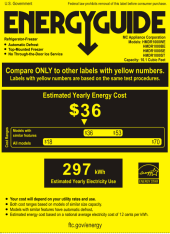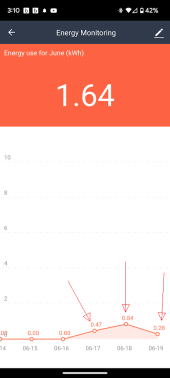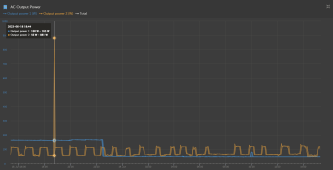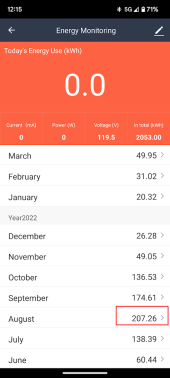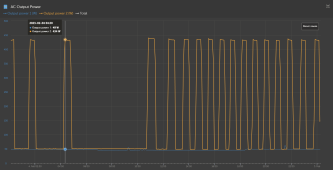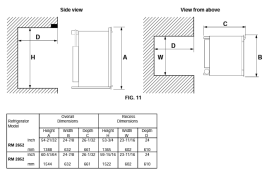Aloha!
So I've been reading and learning as much as I can for a few months now in preparation for going full-time (while working) in a 28' gooseneck. We intend to travel and boondock as much as possible, hopefully 90-100% of the time. Mostly western US, plus Canada and Alaska. It's overwhelming, but I think I'm beginning to understand the basics. 4-5 years traveling is the current plan.
Here is my tentative plan to give you an idea of the system I'm considering:
3850 watts of solar on the roof via 7x 550w Solarever panels. It fits, with room for a maxxair.
15.46kwh of 24v diy batteries (16x 302a 3.2v prismatic cells via solarsupplyhouse.com). I believe this will give me enough of a power reserve in case of extended bad weather. Plan to leave enough space for another 8 cells if I find the need down the road.
Victron Lynx shunt
Victron Lynx distributor
Victron 2412 70v and 12v distribution panel for 12v systems
120V distribution panel
Victron Cerbo GX and Touch 70 with sensor hookups for fresh water, grey, diesel and ?
30amp? (50?) shore power hookup
Master disconnect
Solar disconnect
We'll have a 12k 110v mini-split AC, 2 macbook pros, an imac pro with 2 monitors, w/d, a pair of isotherm 12v fridge/freezers (or similar), tv, coffee, and the regular comforts of home. 12v puck lights, 12v indirect led strips. Plus we'll have Milwaukee tools to charge sometimes (m12 and m18 systems), all my camera gear (not a big power drain), and a 3hp electric outboard battery now and then. Not sure on propane stove or induction yet. I plan on installing a diesel heater so we won't have to rely on the mini-split for heat (to save energy, I figure this will greatly extend our bad/cold weather time if we get stuck for a while). I feel like I can't really do an accurate power audit since I don't physically have much of this stuff. We want to be able to boondock for 2 weeks at a time with a good battery buffer for extended days of poor solar production.
First question is what do you suggest for wiring the solar panels? Series? Both Series AND parallel? I understand that series wiring with multiple mppt's is preferred if you will be in full sun most of the time (I could do a 250/85 on 4 panels and a 250/60 on the other 3), but perhaps I've got enough watts there that doing something like 4 panels in a 2/2 parallel and then 3 in series would make sense? Best of both worlds? Would save a bit on a smaller 150/85 mppt, but my main objective is obviously to max out my efficiency while counting on enough coming in. Feel like I have some cushion here with plenty of panel. Was thinking of keeping it to two mppt's as that's just one distributor, but wonder if going to 3 or 4 and everything in series would be the way to go. I'm happy to add a second distributor if you tell me more mppt's is an improvement. As you can see my head is spinning with the possibilities. We will not have a generator and hopefully never be on shore power. Our sun/shade/trees/weather is going to vary tremendously, and we wont be running from bad/hot/cold weather (I'm a landscape photographer, so bad weather is good for me).
Second question is what do you think for the Charger/Inverter? I'm currently leaning towards a pair of Multiplus II 24/3000 in parallel, but I'm not sure that's needed or appropriate. Could I get away with one and not worry about running too much at once? Should I get the Quattro 24/5000 instead? That would allow me to have a 30a and a 50a connection but I don't see much benefit otherwise. The shape of the new Multiplus II's definitely is more convenient for where it's going.
See any other flaws in my plan or anything I should consider? I appreciate the feedback and expertise here!
Thanks so much,
Lyle
So I've been reading and learning as much as I can for a few months now in preparation for going full-time (while working) in a 28' gooseneck. We intend to travel and boondock as much as possible, hopefully 90-100% of the time. Mostly western US, plus Canada and Alaska. It's overwhelming, but I think I'm beginning to understand the basics. 4-5 years traveling is the current plan.
Here is my tentative plan to give you an idea of the system I'm considering:
3850 watts of solar on the roof via 7x 550w Solarever panels. It fits, with room for a maxxair.
15.46kwh of 24v diy batteries (16x 302a 3.2v prismatic cells via solarsupplyhouse.com). I believe this will give me enough of a power reserve in case of extended bad weather. Plan to leave enough space for another 8 cells if I find the need down the road.
Victron Lynx shunt
Victron Lynx distributor
Victron 2412 70v and 12v distribution panel for 12v systems
120V distribution panel
Victron Cerbo GX and Touch 70 with sensor hookups for fresh water, grey, diesel and ?
30amp? (50?) shore power hookup
Master disconnect
Solar disconnect
We'll have a 12k 110v mini-split AC, 2 macbook pros, an imac pro with 2 monitors, w/d, a pair of isotherm 12v fridge/freezers (or similar), tv, coffee, and the regular comforts of home. 12v puck lights, 12v indirect led strips. Plus we'll have Milwaukee tools to charge sometimes (m12 and m18 systems), all my camera gear (not a big power drain), and a 3hp electric outboard battery now and then. Not sure on propane stove or induction yet. I plan on installing a diesel heater so we won't have to rely on the mini-split for heat (to save energy, I figure this will greatly extend our bad/cold weather time if we get stuck for a while). I feel like I can't really do an accurate power audit since I don't physically have much of this stuff. We want to be able to boondock for 2 weeks at a time with a good battery buffer for extended days of poor solar production.
First question is what do you suggest for wiring the solar panels? Series? Both Series AND parallel? I understand that series wiring with multiple mppt's is preferred if you will be in full sun most of the time (I could do a 250/85 on 4 panels and a 250/60 on the other 3), but perhaps I've got enough watts there that doing something like 4 panels in a 2/2 parallel and then 3 in series would make sense? Best of both worlds? Would save a bit on a smaller 150/85 mppt, but my main objective is obviously to max out my efficiency while counting on enough coming in. Feel like I have some cushion here with plenty of panel. Was thinking of keeping it to two mppt's as that's just one distributor, but wonder if going to 3 or 4 and everything in series would be the way to go. I'm happy to add a second distributor if you tell me more mppt's is an improvement. As you can see my head is spinning with the possibilities. We will not have a generator and hopefully never be on shore power. Our sun/shade/trees/weather is going to vary tremendously, and we wont be running from bad/hot/cold weather (I'm a landscape photographer, so bad weather is good for me).
Second question is what do you think for the Charger/Inverter? I'm currently leaning towards a pair of Multiplus II 24/3000 in parallel, but I'm not sure that's needed or appropriate. Could I get away with one and not worry about running too much at once? Should I get the Quattro 24/5000 instead? That would allow me to have a 30a and a 50a connection but I don't see much benefit otherwise. The shape of the new Multiplus II's definitely is more convenient for where it's going.
See any other flaws in my plan or anything I should consider? I appreciate the feedback and expertise here!
Thanks so much,
Lyle
Last edited:






